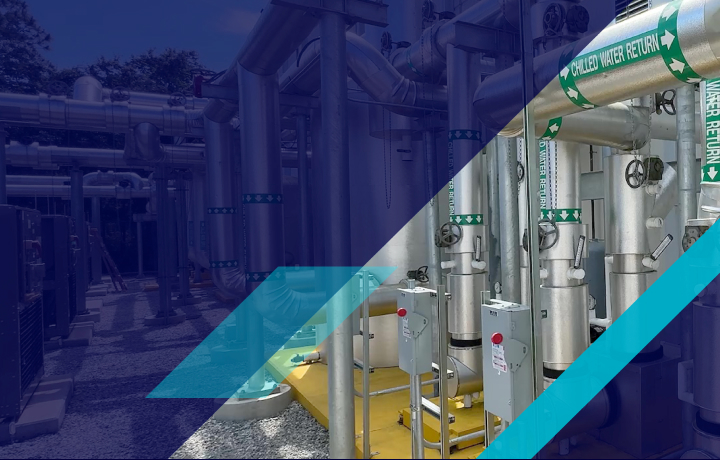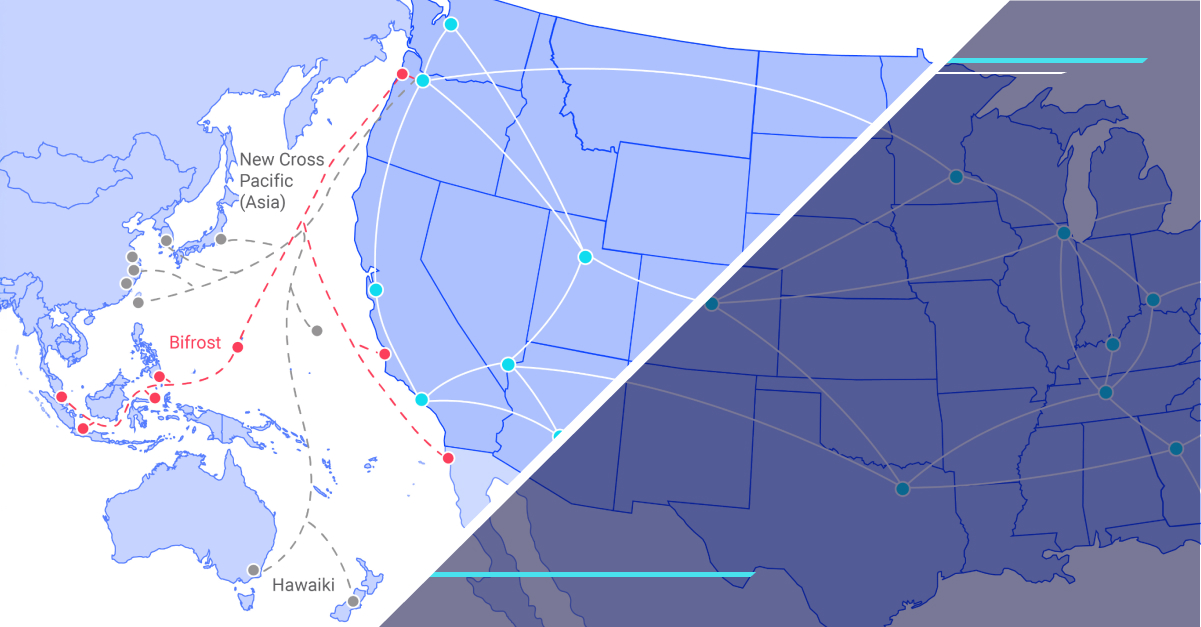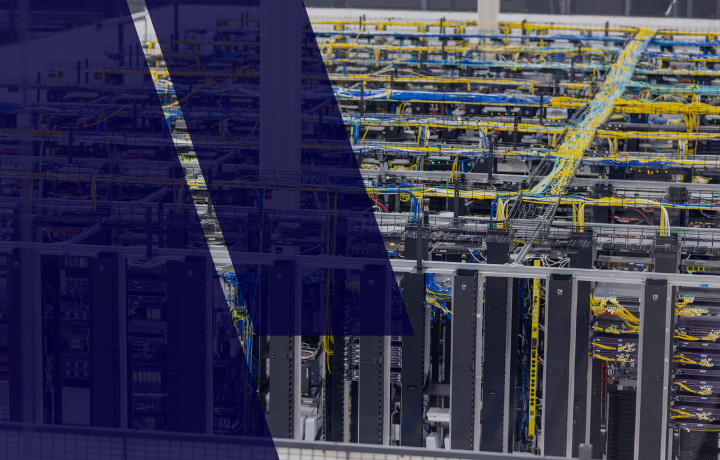Data center migration: Checklist & best practices
A data center migration, or relocation, is the process of moving select assets from one data center environment to another. It can also include moving assets into or out of the cloud.

At some point during the life of an IT environment, enterprises will need to consider a data center migration for one reason or another, and there are numerous events that precipitate the need. Ultimately, going through the actual migration process consists of answering the question:
"How do I move my data to a new environment safely and mitigate risk in the process?"
Moving mission-critical infrastructure requires more than good intentions. It requires a detailed data center migration plan, the right team, and a clear understanding of what can go wrong. This guide walks you through proven best practices and provides a comprehensive data center migration checklist to help you execute a smooth, successful transition.
Why data center migration demands careful planning
A data center migration can be an overwhelming project. The stakes are high: downtime can cost thousands of dollars per minute, and mishandled transitions can result in data loss, compliance violations, or extended outages that damage customer trust.
Today's IT organization is always under pressure to positively impact business and benefit the bottom line. Those managing the IT infrastructure are typically expected to:
- Increase efficiency
- Improve cost-effectiveness
- Achieve high availability
- Stay competitive
In the beginning stages of carrying out a migration, identifying a current application profile and defining the ideal place for the IT environment to live are key starting points. Businesses must determine where and what their customers want to access and how they can be best serviced from an IT perspective.
Risks, downtime, and complexity
Data center migration introduces several inherent risks. Equipment can fail during transport. Applications with undocumented dependencies can break unexpectedly. Network configurations that worked perfectly in the old environment may need significant adjustments in the new one.
Downtime is often the most visible risk. Even a few hours of unplanned outages can lead to service disruptions, lost revenue, and frustrated customers. Understanding how much downtime your business can tolerate and planning accordingly is critical to choosing the right migration approach.
Complexity compounds when you consider the full scope: hundreds or thousands of assets, interconnected applications, compliance requirements, and coordination across multiple teams. Without careful planning, migrations can quickly spiral into chaotic, prolonged projects that exceed budgets and timelines.
Key phases & best practices
IT teams can ensure a smooth migration, minimizing downtime and avoiding hurdles, by implementing best practices across every phase of the project. A successful data center migration strategy addresses assessment, planning, testing, execution, and post-migration optimization.
Assessment & inventory
Identifying migration scope: A crucial starting point is to fully assess the current environment and identify what needs to be moved. There should be a complete inventory of the IT environment, and lists should be created to track your migration plan from both a services and application perspective, and physical equipment.
Define criticality of data: Identifying each asset and application to prioritize levels of business and mission-critical importance is essential. Determine how assets are being used and their relationship to the business as a whole. This criticality assessment will drive decisions about migration sequencing and acceptable risk thresholds.
Assess platform stability: Be aware of equipment age. Is it in danger of failure in transport? Ensure that healthy equipment is on standby in case of an emergency. The condition and age of your hardware help you anticipate potential failures and plan for contingencies.
Dependency mapping
Understanding application dependencies is essential. Many applications rely on specific databases, authentication services, or third-party integrations that must remain accessible during and after the migration. Mapping these dependencies prevents unexpected outages when you move one component without accounting for its relationships to others.
Document which applications communicate with each other, which databases they access, and what external services they depend on. This visibility helps you sequence your migration in a logical order and identify potential bottlenecks or failure points.
Network & architecture planning
Know your network: It is imperative to establish your network at the new location and thoroughly test communication for latency and connectivity to public clouds. Do not simply rely on copying configurations for network infrastructure or replicating the old ones. Use this as a chance to improve your setup.
Review your current network architecture and consider whether it still serves your needs. A migration is the perfect time to optimize routing, improve security postures, and eliminate technical debt that has accumulated in the old environment. Test connectivity thoroughly before migration day to ensure your new network can handle production traffic.
If you're implementing cloud migration strategies, evaluate how network topology changes might affect application performance. Latency, bandwidth, and routing all play critical roles in user experience.
Testing, dry runs & validation
Test migration plan: Testing the data center migration plan is a critical best practice. It is never a good idea to migrate a platform for the first time on the day of the actual migration. Complete a series of tests on taking applications through the process to validate if each step laid out will work properly. Testing will provide a better understanding of how to go through the migration process step by step.
Run dry runs with non-critical systems first. These practice migrations reveal gaps in your plan, expose undocumented dependencies, and give your team the confidence they need to execute the real migration smoothly. Document everything that goes wrong during testing so you can address it before production cutover.
Validation extends beyond technical testing. Confirm that backup and recovery procedures work in the new environment. Verify that monitoring tools are properly configured. Test failover mechanisms and disaster recovery processes to check that the data resiliency and data recovery capabilities meet your requirements.
Cutover & execution
Establish how the move will be accomplished: Establishing an actual migration methodology is probably the most critical step; there are a lot of moving parts.
Determine downtime caused by migration: Know how much downtime, if any, can be reasonably incurred throughout the migration. This will drive the method to process the actual migration alongside the scope.
Is it a "forklift" process, where equipment will be picked up and moved? Or is it a swing migration, during which uptime is required throughout the migration process? Your tolerance for downtime determines your approach.
Assess the tools needed for data migration: If a cloud migration strategy is used, determine how large volumes of data will be transported. Some customers opt for network storage appliances that take copies of data and move it first, while others use software capable of over-the-wire data transfers. Assessing the best method is driven by the criticality of data and uptime requirements. Consider using a combination of approaches.
Coordinate closely with all stakeholders during cutover. Communication is essential: make sure everyone knows the migration timeline, their responsibilities, and who to contact if problems arise.
Post-migration monitoring & optimization
The migration isn't finished when systems come online in the new environment. Post-migration monitoring is critical to catching issues that only appear under production load. Look for performance problems, unexpected errors, and subtle configuration issues that testing might have missed.
Establish baselines for performance metrics in the new environment and compare them to pre-migration benchmarks. If applications run slower or consume more resources, investigate root causes and optimize accordingly.
This is also the time to clean up technical debt, document changes, and update disaster recovery plans to reflect the new environment. A successful migration sets the foundation for improved operations and gives you the chance to optimize what wasn't working before.
Data center migration checklist (step-by-step)
This comprehensive data center migration checklist breaks down the process into manageable phases. Use it as a framework to build your own data center migration plan, adapting each section to fit your specific environment and requirements.
Pre-migration tasks
Assessment & planning
- Complete full inventory of all physical and virtual assets
- Document application dependencies and data flows
- Identify mission-critical systems and establish priority tiers
- Assess equipment age and condition for transport readiness
- Define acceptable downtime windows for each application tier
- Create detailed network topology maps for both environments
Preparation & risk management
- Establish migration methodology (forklift, swing, phased, etc.)
- Select data transfer methods based on volume and criticality
- Identify and procure any additional tools or software needed
- Schedule equipment transport and coordinate logistics
- Confirm backup and disaster recovery procedures are current
- Establish rollback procedures in case migration fails
- Create communication plan for stakeholders and end users
New environment setup
- Install and configure network infrastructure at new location
- Test connectivity, latency, and bandwidth to public clouds
- Verify power, cooling, and physical security meet requirements
- Set up monitoring and management tools in new environment
- Configure backup systems and test restoration procedures
- Validate compliance and security controls are in place
Testing & validation
- Run dry runs with non-critical systems
- Test application performance in new environment
- Verify dependency chains work as expected
- Confirm monitoring and alerting functions properly
- Test disaster recovery and failover mechanisms
- Document lessons learned from dry runs
Migration execution tasks
Cutover preparation
- Send final communication to all stakeholders about migration timeline
- Confirm all teams understand their roles and responsibilities
- Verify backup completion of all systems before migration
- Take final snapshots of critical systems
- Confirm rollback procedures are ready if needed
Physical migration
- Power down and prepare equipment for transport (if applicable)
- Document serial numbers and configurations before disconnection
- Transport equipment using proper handling and security protocols
- Install and rack equipment in new location
- Verify physical connections and cable management
System migration & configuration
- Power on systems in planned sequence
- Configure network settings for new environment
- Transfer data using predetermined methods
- Validate application configurations and dependencies
- Update DNS records and routing tables
- Test connectivity between migrated systems
Go-live & validation
- Bring applications online in priority order
- Monitor system performance and resource utilization
- Verify end-user access and functionality
- Check that integrations and third-party services work correctly
- Confirm monitoring and alerting are functioning
- Stay on high alert for issues during initial hours
Post-migration validation tasks
Performance & functionality verification
- Compare performance metrics to pre-migration baselines
- Test all critical business processes end-to-end
- Verify backup and disaster recovery procedures work in new environment
- Confirm compliance and security controls function properly
- Validate that no data was lost or corrupted during migration
- Check that all applications are communicating correctly
Optimization & documentation
- Tune configurations based on observed performance
- Address any issues identified during initial monitoring
- Update all documentation to reflect new environment
- Document configuration changes and lessons learned
- Archive migration project materials for future reference
- Conduct post-migration review with all stakeholders
Decommissioning
- Verify all systems are stable in new environment before decommissioning old
- Securely wipe or destroy old equipment per data security policies
- Cancel services and contracts for old data center location
- Update disaster recovery plans for new environment
- Update change management and configuration management databases
Common pitfalls & how to avoid them
Even well-planned migrations can encounter problems. Being aware of common pitfalls helps you anticipate and prevent them.
Undocumented dependencies: Applications often rely on services or databases that weren't formally documented. Map all dependencies before migration day and test thoroughly to uncover hidden connections.
Inadequate testing: Skipping dry runs to save time almost always backfires. Testing reveals problems when the stakes are low, giving you time to fix them before production cutover.
Poor communication: When teams don't know the plan, timeline, or their responsibilities, chaos follows. Establish clear communication channels and send regular updates throughout the migration process.
Underestimating data transfer time: Large data volumes take longer to move than most teams expect, especially over network connections. Calculate realistic transfer times and build in buffer room.
Configuration drift: Assuming old configurations will work in the new environment is risky. Review and test all configurations in the new location rather than blindly copying them over.
Neglecting post-migration monitoring: Problems don't always appear immediately. Monitor closely for at least several days after migration to catch issues that only emerge under production load.
Ignoring compliance requirements: Different locations may have different regulatory requirements. Verify that your new environment meets all necessary compliance standards before moving regulated data.
Work with the right partner
Regardless of the reasons for the need to migrate, being prepared is every business's greatest ally. Carefully determine whether the adequate internal resources necessary to execute a successful migration are available.
If self-migration is preferred, third parties can still be leveraged to assist with the physical move, freeing engineers to assist with data migration. This hybrid approach can reduce the burden on internal teams while maintaining control over critical technical decisions.
Working with a third-party migration partner can also be a viable option and removes much of the pressure from the process, so long as a provider seasoned in migration is selected. Choose a migration partner that will take the time upfront to go over planning and migration strategies for:
- Infrastructure
- Network connectivity
- Applications
- Data and security
- Compliance requirements
When evaluating whether to handle migration internally or work with a partner, consider your team's expertise, availability, and bandwidth. Migrations are time-intensive projects that often run alongside normal operations. If your team is already stretched thin, a qualified partner can accelerate the process and reduce risk.
Look for partners with proven experience in migrations similar to yours. Ask for references and case studies. Understand their methodology and how they handle problems when they arise. The right partner doesn't just move equipment; they become an extension of your team, bringing specialized expertise and additional capacity when you need it most.
For organizations evaluating colocation vs cloud strategy decisions during migration, experienced partners can help identify the best fit for your workloads and business requirements.
There are three areas that can pose difficulty when switching cloud providers or data center environments:
Moving workloads: It's important to understand that different workloads merit different deployment options. For example, Flexential offers a "white glove" premium service for customers wanting to move mission-critical workloads to the cloud.
Migrating applications: A clear understanding of the business criticality and dependencies of each application you are migrating is also important. A reputable provider will have the depth and breadth of capabilities to classify all applications and add them to a product catalog for a risk and supportability assessment. A detailed integration, user acceptance, and performance testing test plan is also necessary.
Migrating data: Support, monitoring, and management of the data during and after migration is also essential.
If you're in the process of choosing a migration partner, select one that can help you navigate these trouble areas and has proven success and a solid reputation. The right partner can make all the difference in avoiding a migration catastrophe.
Ready to plan your data center migration with confidence? Explore Flexential's colocation and cloud migration solutions or contact our team to discuss your specific migration needs. Our experts can help you develop a comprehensive migration strategy, execute a smooth transition, and optimize your infrastructure for the future.
For more guidance on related topics, explore our resources on data center best practices and data center compliance.
Key takeaways and data center migration FAQs
A successful data center migration requires thorough planning, disciplined execution, and careful post-migration validation. By following the best practices and data center migration checklist outlined in this guide, you can minimize risk, reduce downtime, and set your organization up for long-term success in the new environment.
Migration offers a chance to optimize your architecture, eliminate technical debt, improve security postures, and build a more efficient, resilient infrastructure.
What is a data center migration checklist?
A data center migration checklist is a structured, step-by-step guide that helps organizations plan and execute the process of moving IT infrastructure from one location to another. It breaks down the migration into manageable phases (pre-migration, execution, and post-migration) ensuring that critical tasks aren't overlooked and reducing the risk of downtime or data loss.
How long does a data center migration take?
Migration timelines vary widely depending on the size and complexity of your environment. Small migrations with limited assets might take a few weeks from planning to completion, while large enterprise migrations can span several months or even a year. Factors that influence timeline include the number of applications, data volume, complexity of dependencies, acceptable downtime windows, and whether you're using phased or cutover migration approaches.
What are the major challenges?
The most common challenges include managing application dependencies, minimizing downtime, transferring large data volumes, maintaining security and compliance, coordinating across multiple teams, and handling unexpected issues during cutover. Adequate planning, thorough testing, and clear communication help mitigate these challenges. Many organizations also struggle with scope creep (the tendency for migration projects to expand beyond initial plans), so disciplined project management is essential.






